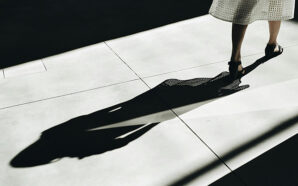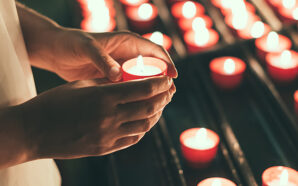“It looked like a medieval battle scene.”
That’s how a Washington, D.C., police officer described the January 6 assault on Capitol Hill, the seat of the United States Congress.
Medieval battle scene is an appropriate image to describe what’s happened in American Catholicism since Pope Francis’ election in 2013.
We have seen similar rallying cries (“let’s take back our Church”), similar tactics (the spreading of lies and conspiracy theories) and similar eminent masterminds or at least useful minimizers of what’s been happening (not the dishevelled characters in the mob, but the ones wearing a suit and tie from a Catholic TV studio).
If the assault on Capitol Hill was that of a mob trying to subvert the constitutional order in the United States, what’s happened in the Catholic Church in the last several years has been an attempt to defenestrate the current pope.
A former papal nuncio and his anti-Francis cabal
It was begun earlier on — in the spring and summer of 2013 — by trying to undermine his legitimacy.
Then, when those delegitimization tactics were clearly not working, a cabal was formed around Archbishop Carlo Maria Viganò in August 2018 when the former papal nuncio to Washington (2011-2016) spearheaded a ferocious and unprecedented campaign to discredit Francis.
As Viganò goaded the Jesuit pope to resign, two dozen U.S. bishops publicly supported the former nuncio. Not one of those bishops has ever apologized or retracted his support, even as both Viganò and his claims have been decisively debunked.
Not surprisingly these are the same bishops who seek to delegitimize President Joe Biden’s credentials as a Catholic.
An ongoing political and religious crisis in America
The Church in the United States is at the centre of both the political and religious crisis that is not anywhere near to be resolved in the foreseeable future.
The US Conference of Catholic Bishops (USCCB) has been unable to narrow the gap between trying to remain non-partisan and being willing to speak the truth.
It’s enough to compare the USCCB’s statement on the Capitol Hill to Austrian Cardinal Christoph Schönborn’s denunciation of the insurrection attempt.
Archbishop Paul Coakley of Oklahoma City, chairman of the USCCB’s Committee on Domestic Justice and Human Development, issued a statement on January 16 calling for peace and condemning the violence.
But Cardinal Schönborn had already gone even further than that.”The crowd that stormed the Capitol was falsely convinced that they were fighting the biggest electoral fraud in America’s history. Nothing justifies their violence. Even less: the lies that led to the violence,” the cardinal said in a January 15 statement.
“This is what happens when truth can no longer be distinguished from lies. What a warning against the power of lies!” he exclaimed.
In fact, “the power of lies” is at the heart of the problem concerning the recent attacks against both the constitutional system of American democracy and the ecclesial status of the Catholic Church in the country.
Beyond the bishops, Catholics in mainstream media
An intra-Catholic debate over the past several days has rightly and necessarily focused on the US bishops’ failure to unequivocally denounce Trumpism or the willingness of some Catholic leaders to give Trump a free pass and portray him, tacitly or quite openly, as the candidate more sympathetic to the Church.
Attention has focused also on the responsibility that the Catholic media in the United States bears for creating a hate-filled environment.
But here there is another class of leaders that have been let off too easily: the prophets and precursors of Catholic Trumpism who are not members of the clergy and do not work in Catholic media.
There are Catholics in the mainstream commentariat who have sought to dignify the “take back our Church” instincts channelled by less prestigious media outlets.
The Catholics with a media following who are gunning for Pope Francis
For instance, Ross Douthat, an adult convert to Catholicism who has been a columnist for the New York Times since 2009, constantly downplayed the threat that Donald Trump represented for American democracy from the moment the reality TV show host and billionaire announced his candidacy for the White House in 2015.
At the same time, Douthat was fomenting suspicions towards Pope Francis.
“The pontiff’s ambitions have encouraged plotters and counterplotters to work with greater vigour. And right now, the chief plotter is the pope himself,” he charged in the opening lines of one of his columns in October 2015.
That article was not an isolated incident. Douthat published a book in 2018 on Francis – or better yet, against him.
It is full of insights typical of a wickedly clever intellectual. But it also reveals some of the cultural illnesses of Trumpism.
One need only look at the sources Douthat quotes. Some of them are known for their relentless campaign of lies against the pope.
And then there are the prominent “former Catholics” who attack the pope
Another hero of Catholic conservatives is the journalist Rod Dreher. Once a convert to Catholicism, he is now a member of the Eastern Orthodox Church.
His outbursts against Pope Francis did not make it into the non-repentance he published after what he saw in the Trump movement’s rally in Washington, D.C. on December 12.
It just so happened that Viganò addressed that event via video.
In a February 2020 article called, “The Pope Francis Threat”, Dreher derided the current pontificate.”Spiritual warfare happening now at the summit of the Catholic Church is going to be decisive for the future of the world,” he wrote.
But this is just one example.
Mobs and those who embolden them
The assault on Capitol Hill was an act of domestic terror prepared and carried out by hundreds or thousands of individuals. But there are others who were not part of that mob on January 6 who bear moral responsibility for what took place.
They include Catholics who wield political power and others who work in the media.
And they also share responsibility for the assault on Francis’ pontificate. The only reason Archbishop Viganò’s lies have gained traction among a Catholic public is because a commentariat that should know better has been feeding those lies.
Among them are Catholics (and former Catholics) who have had no moral or professional qualms about participating in this act of mendacity in order to expand their already large media audiences.
Of course, the problem is not about criticizing the pope. It’s blaming the things he does that you don’t like on some sort of nefarious conspiracy. We have seen this played out in US politics as well as in the Church.
A moment of reckoning
There is a parallel between the attack on the legitimacy of an election and the refusal to accept its outcome, regarding both Pope Francis and President Biden.
The conspiracy theories led a number of people in the United States and within the Catholic Church there to totally lose it, while their intellectual enablers managed to surf the anti-institutional and anti-establishment tide.
In this political and ecclesial moment, it is easy to go after the Catholic media. It’s even easier to point the finger at the bishops, a visible target with a lot to answer for.
But this moment of reckoning demands a wide spectrum of analysis, and especially a reflection on the role of the opinion leaders who have helped develop “getting away with everything” into an art.
It is the privilege of those George Orwell called the “unteachable” ruling class – the product of an elite system where ignorance is well disguised by contempt and dismissiveness of what they ignore.
Getting away with spreading lies may be the rule in politics. But it should not be the way the Church deals with what has happened these past four or so years.
I am looking forward to the mea culpa of some bishops. It’s more likely to come from them than from those Orwell considered unteachable.
Massimo Faggioli is professor of theology and religious studies at Villanova University. His most recent book, Joe Biden and Catholicism in the United States, was published by Bayard on January 20.
With thanks to Massimo Faggioli and La Croix International where this article first appeared.








